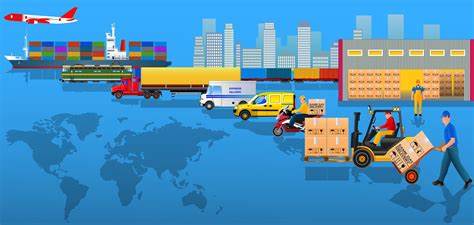
How Does International Freight Management Work?
Transporting goods has become increasingly important in today’s global economy. Businesses want reliable and effective ways to move their goods from one place to another. For any company that conducts business on a global basis, effective freight management is essential to the timely, safe, and secure delivery of goods.
This article will discuss the processes involved in international freight management and how they work.
1. Determining the Origin and Destination
Determining the origin and destination of goods is a crucial first step in international Freight Management. This information is required to plan the movement of goods across international borders and to guarantee their timely and economical delivery.
2. Choosing the Mode of Transportation
A shipment’s cost, delivery date, and overall success can all be impacted by the mode of transportation chosen for international freight management. Whether air, sea, rail, or road transportation, each mode has unique advantages and disadvantages. Choosing the right one for each shipment is important to ensure that it is delivered efficiently and cost-effectively.
Another important consideration is the nature of the goods being shipped. The size, weight, and type of commodities the company can transport may be subject to constraints or standards for various types of transportation. To guarantee that the commodities are handled securely and safely, it is crucial to select the appropriate method.
3. Complying with Clearances
Customs clearance is obtaining authorization from customs authorities to import or export goods across international borders. This process can be complex, time-consuming, and subject to many regulations, so it is important to have experienced professionals handle customs clearances for international freight management.
Different countries have different regulations regarding the import and export of goods, which can impact the cost, delivery time, and other aspects of international shipping. That is why it is important to have complete and accurate documentation to ensure a smooth customs clearance process.
4. Tracking Cargo
Tracking and tracing enable businesses to monitor the progress of their shipments and ensure that they are delivered on time and to the right place. With it, businesses can access real-time information about their shipments, from the time of dispatch to delivery, which can help improve the overall shipment’s efficiency.
Aside from that, international freight management reduces various risks related to customs, transportation, and other potential complications.
5. Delivering to the Recipient
Once a shipment has been transported to the destination country, the freight management will arrange its delivery to the recipient. Arranging delivery is a crucial phase in the freight transportation process, as it ensures that the shipment is delivered at the right time, to the right place, and without any issues. Effective delivery arrangements help to minimize risks and improve business efficiency.
Expand with Freight Management
International freight management is a complex and multifaceted process that requires careful planning, coordination, and execution. By working with experienced professionals and following the appropriate procedures, it is possible to ensure that goods are delivered efficiently, cost-effectively, and on time, no matter where they are.
References:
https://www.altexsoft.com/blog/freight-management-overview/
https://glomacs.com/online-training-course/international-freight-management-2
https://www.gocomet.com/blog/freight-management-and-how-it-works/
https://www.penskelogistics.com/solutions/freight-management/what-is-freight-management
https://www.redwoodlogistics.com/what-is-freight-management/







